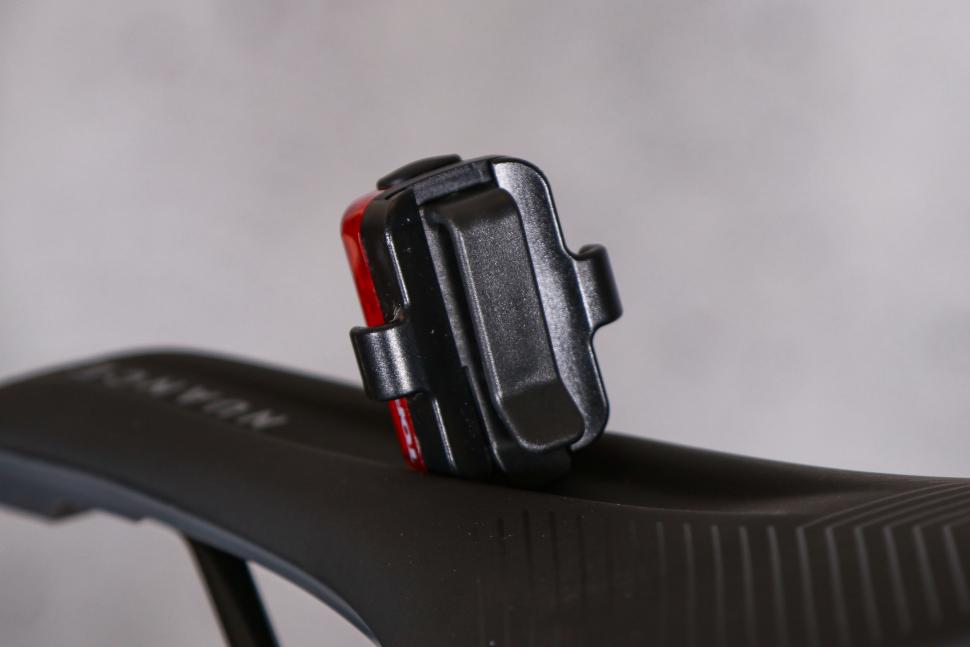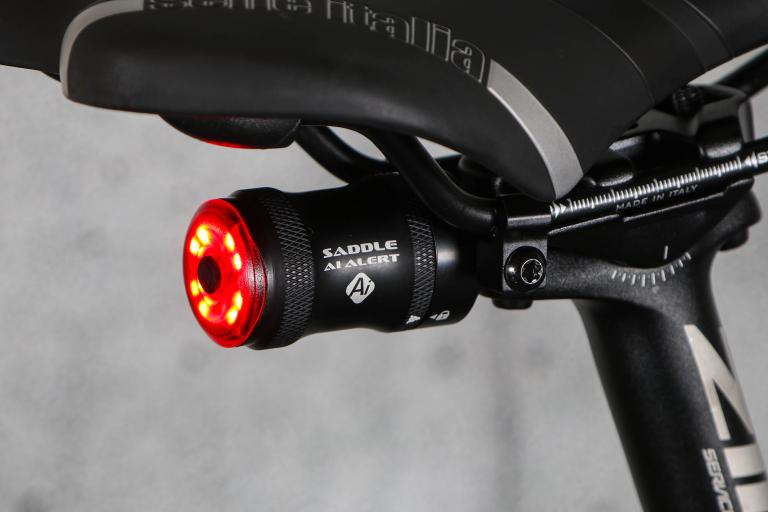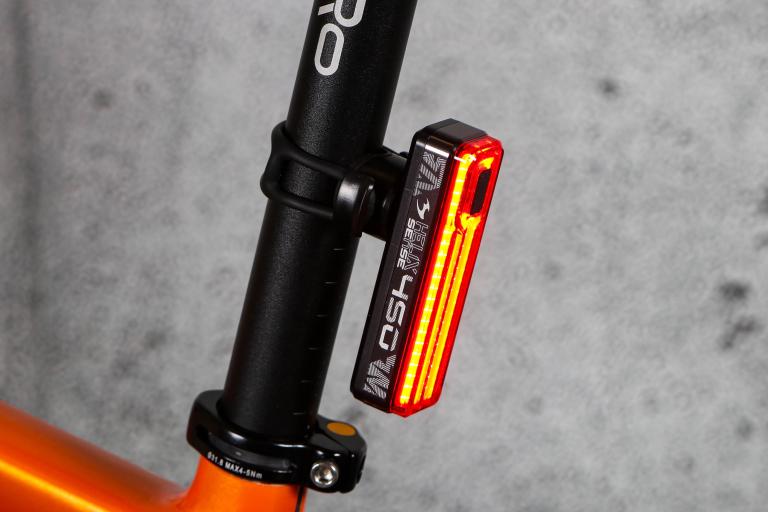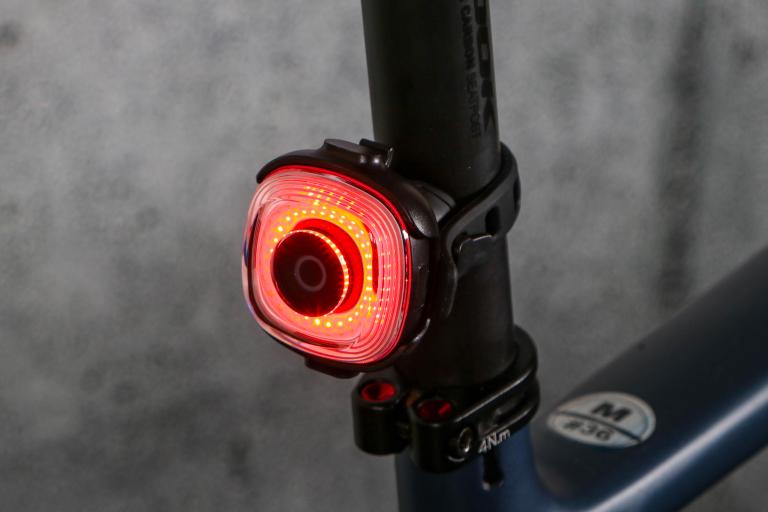- News
- Reviews
- Bikes
- Components
- Bar tape & grips
- Bottom brackets
- Brake & gear cables
- Brake & STI levers
- Brake pads & spares
- Brakes
- Cassettes & freewheels
- Chains
- Chainsets & chainrings
- Derailleurs - front
- Derailleurs - rear
- Forks
- Gear levers & shifters
- Groupsets
- Handlebars & extensions
- Headsets
- Hubs
- Inner tubes
- Pedals
- Quick releases & skewers
- Saddles
- Seatposts
- Stems
- Wheels
- Tyres
- Tubeless valves
- Accessories
- Accessories - misc
- Computer mounts
- Bags
- Bar ends
- Bike bags & cases
- Bottle cages
- Bottles
- Cameras
- Car racks
- Child seats
- Computers
- Glasses
- GPS units
- Helmets
- Lights - front
- Lights - rear
- Lights - sets
- Locks
- Mirrors
- Mudguards
- Racks
- Pumps & CO2 inflators
- Puncture kits
- Reflectives
- Smart watches
- Stands and racks
- Trailers
- Clothing
- Health, fitness and nutrition
- Tools and workshop
- Miscellaneous
- Buyers Guides
- Features
- Forum
- Recommends
- Podcast
review
 2022 Topeak Taillux 30 USB 2.jpg
2022 Topeak Taillux 30 USB 2.jpg£32.99
VERDICT:
Relatively powerful compact and simple light with a very frugal flashing mode
Super-frugal flashing mode
Simple
Quick charging
Light
Compact
Good weather sealing
Nice mounting options
No daylight running mode
Less powerful than some cheaper rivals
Weight:
18g
Contact:
At road.cc every product is thoroughly tested for as long as it takes to get a proper insight into how well it works. Our reviewers are experienced cyclists that we trust to be objective. While we strive to ensure that opinions expressed are backed up by facts, reviews are by their nature an informed opinion, not a definitive verdict. We don't intentionally try to break anything (except locks) but we do try to look for weak points in any design. The overall score is not just an average of the other scores: it reflects both a product's function and value – with value determined by how a product compares with items of similar spec, quality, and price.
What the road.cc scores meanGood scores are more common than bad, because fortunately good products are more common than bad.
- Exceptional
- Excellent
- Very Good
- Good
- Quite good
- Average
- Not so good
- Poor
- Bad
- Appalling
The Topeak Taillux 30 USB Rear Light is a simple three-mode model pumping out – you've guessed it – a maximum of 30 lumens. I've been impressed by its blend of output and economy, especially in the flashing mode, but its overall size means it's probably better as a secondary/backup light for the darkest roads.
Materials/specification
The housing and lens are made from injection molded polymer, which feels more robust than the materials and overall weight might imply. It's also waterproof to IPX6, which bodes well for soggy winter roads sans guards. Inside there are two LEDs, both red, though there is also a version with red and amber diodes.
> Find your nearest dealer here
The light is projected through a condenser lens, which is made up of two convex lenses placed back-to-back. The curved surfaces face each other, the flat sitting on the outside. This is a simple means of correcting distortions and, theoretically, keeping the output bright and sharp.
The battery is an integrated 3.7 V 250mAh lithium polymer cell, which charges using a micro-USB cable. It's reckoned good for 300 charge cycles before dropping to 60% of capacity.
Mounting
Measuring 3.9x3.7x2.1cm, it's very unobtrusive and is easily mounted to helmets, aero and standard diameter seatposts, and, indeed, frame tubing. There are two sizes of strap that attach to lugs on the light for a simple, secure union – I had no issues with slippage or rotation, even when hustling along unmade roads and bridleways.
Topeak cites tubing diameters of 25.4mm upwards, but I found it also mounted reliably to thinner gauges, the sort typical of steel seatstays, using the aero block/shim. This (and its round counterpart) seems kind to carbon, titanium and paintwork, but bear in mind that wet gritty stuff can sneak beneath, potentially leaving unsightly marks.
It's also easily clipped to luggage or clothing.
Modes and performance
Once the light is attached there's easy access to the top-mounted switch. Though small, this is slightly raised, so easily found and used when wearing full-finger gloves.
You hold the button for half a second to turn the light on/off, and subsequent prods change mode. Thus far, I've not had any accidental engagements when it's been in the bottom of a bag.
There are three modes in total: constant, a hybrid of constant and blinking, and blinking. Refreshingly simple in my book, and does away with the need for memory functions.
Though it's not the most potent of lights or blessed with the biggest surface area, output and presence are sensible for most riding contexts.
In the blinking mode, friends reckoned they could pick the light out at 100 metres along pitch black lanes, dipping to 80 or so through built-up areas.
Round town I'd probably go for the hybrid constant/blinking since the blinking on its own is a bit brash at close range. Long steady night rides are where this has really excelled, sipping reserves and meaning I could just relax and enjoy the ride.
> Buyer’s Guide: 10 of the best rear lights for cycling
It's brilliant for middle and long-distance commuting too. While I try to keep lithium-ion and lithium-polymer batteries charged to around 70%, thus giving them the best chance of long and happy lives, I've had the full, cited 30 hours from a full charge.
The hybrid constant/blinking is arguably the sweet spot through town, visible from 50-70 metres when bike mounted, so the right side of assertive. Running it as a secondary, helmet-mounted light adds another 10 metres or thereabouts.
While none of the three modes are what I'd consider daylight running, the blinking and hybrid were reassuringly extrovert on dull, wintry days and, crucially, dusk.
Run-times and charging
I'm pleased to report that run-times have been faithful to those cited – I've had 3 and 3.5 hours from the constant and hybrid modes respectively, and the full 30 in blinking.
Charging has also taken the predicted two hours from the mains, another 10 or 15 minutes when plugged into a laptop port.
A green light denotes charging, turning clear when it's fully juiced, which seems a bit counter intuitive initially.
Weatherproofing/durability
It has been decidedly wet throughout the test period, but with its IPX6 rating it has resisted torrential rain, muddy spatter, regular bucket washes and a close range, three-minute blast from my garden hose without missing a beat.
Mounted low on the seatstays, it has also been struck by the odd rogue stone and shows no signs of damage.
Value
There's quite a bit of choice at this end of the market. I'm still a big fan of Ravemen's TR30M rear light, which has the same maximum output of 30 lumens but also includes an auto kick-down for a few quid less (£29.99), though the mounting bracket could be improved.
I'm also very fond of its CL06 cousin, which boasts 50 lumens, a solid build quality and good run-times for £31.99. It includes a brake sensor, although Steve found it overly sensitive, so puts a dent in run-times.
If you're seeking a punchy daylight running mode, Cateye's Viz100 has a 100-lumen hyperflash (daylight flash) and comes in at just £24.99.
There are also attractive options from Magicshine: the cheaper SeeMee 100, now £28.99, and the SeeMee 180, now £34.99, both of which offer some very bright flashing modes and a braking function – although again, these put a dent in run-times.
Conclusion
The Taillux 30 is a simple and reasonably bright rear light, with some nice touches. It covers most bases reasonably well and has a frugal flashing mode, but there are more potent choices at this end of the market, especially for those wanting a daylight running function.
Verdict
Relatively powerful compact and simple light with a very frugal flashing mode
road.cc test report
Make and model: Topeak Taillux 30 USB
Size tested: 30 lumens max
Tell us what the light is for, and who it's aimed at. What do the manufacturers say about it? How does that compare to your own feelings about it?
Topeak says: "Compact and lightweight tail light with 2 super bright LEDs fits aero / round seatposts, Topeak bags or helmet. Rubber strap allows tool-free mounting/removal and multi mounting positions."
My feelings are it's a simple and reasonably bright rear light with nice mounting kit.
Tell us some more about the technical aspects of the light?
Topeak lists:
MAX LUMINOUS INTENSITY
30 Lumens
LAMP
RR: 2 super bright red LED's
RY: 1 super bright red LED & 1 super bright yellow LED
BATTERY
3.7V 250mAh (integrated)
CONTROL / BURN TIME (APPROX)
3 modes :
3 hr (Constant)
3.5 hr (Upper : Constant / Lower : Blinking)
30 hr (Blinking)
CHARGE / CHARGE TIME
Micro USB / 2 hr (approx)
INPUT
5V 500mA
LAMP HOUSING
Injection molded polymer
STRAP MOUNT
Fits seatpost (ø25.4 - ø34.9mm), Topeak bags & helmet
WATERPROOF
IPX 6
SIZE
3.9 x 3.7 x 2.1 cm / 1.5' x 1.4' x 0.8'
Rate the light for quality of construction:
7/10
Light but seemingly solid, and IPX6 is nice to see.
Rate the light for design and ease of use. How simple was the light to use?
8/10
Three modes and a user-friendly switch that doesn't seem prone to accidental or unwanted power-ups when in a bag or pocket.
Rate the light for the design and usability of the clamping system/s
8/10
Simple and versatile, giving the options of attaching to seatpost, helmet, and luggage.
Rate the light for waterproofing. How did it stand up to the elements?
8/10
IPX6, so I wasn't surprised to discover it shrugged off bucket washes, heavy rain, and waterlogged roads.
Rate the light for battery life. How long did it last? How long did it take to recharge?
6/10
Reasonable in the steady and hybrid modes (and faithful to the 3 and 3.5 hours cited); and similarly accurate and generous (30 hours) in blinking mode. Charge times are similarly accurate, 2 hours from the mains, another 15 minutes from a laptop/similar device.
Rate the light for performance:
7/10
For a compact light, presence is good and it seems brighter than 30 lumens might suggest. For the darkest roads, I'd be inclined to run it as a secondary or complementary light. Similarly, I'd look elsewhere – possibly to its 100-lumen sibling – if I wanted a daylight running mode, but otherwise,the Taillux 30 covers most riding contexts.
Rate the light for durability:
7/10
Seems well made and IPX6 rating for weatherproofing inspires confidence.
Rate the light for weight:
9/10
Rate the light for value:
4/10
Well made, comprehensive fitting options and decent output are some definite plus points, but there are bigger and brighter models at this end of the market.
Tell us how the light performed overall when used for its designed purpose
It's simple and bright enough for most riding contexts, and I've been particularly impressed by the blinking's blend of tempo, assertiveness and frugality. I've also been pleased by the versatile mounting options, supplied as standard. However, an auto kick-down, defaulting to blinking when reserves in the other mode drop too low, seems a missed opportunity. Similarly, though relatively bright, it's better as a secondary light along the very darkest roads, and those wanting a daylight running light are better served elsewhere.
Tell us what you particularly liked about the light
Simple, light, yet solid construction and good output for general riding.
Tell us what you particularly disliked about the light
Not a major gripe but an auto kick-down to flashing when reserves take a dive would be good.
How does the price compare to that of similar products in the market, including ones recently tested on road.cc?
Though hardly expensive, there are models offering greater power and more features such as Ravemen's TR30M for £29.99 and its CL06 cousin for £31.99. Cateye's Viz 100 has a 100-lumen hyperflash (daylight flash) and comes in at £24.99. Magicshine's See Mee 100 has gone up to £28.99 since we tested it, so still cheaper, while the SeeMee 180 is now £34.99, so a couple of quid more than the Topeak; both offer some very bright flashing modes and a braking function, although in keeping with others, these put a dent in run-times.
Did you enjoy using the light? Yes
Would you consider buying the light? Yes
Would you recommend the light to a friend? Well worth a look, if they wanted a simple and relatively bright compact light and weren't overly fussed about a daylight running mode.
Use this box to explain your overall score
It's good: a nice, simple light for general riding.
About the tester
Age: 48
I usually ride: Rough Stuff Tourer Based around 4130 Univega mtb Frameset My best bike is: 1955 Holdsworth Road Path and several others including cross & traditional road
I've been riding for: Over 20 years I ride: Most days I would class myself as: Experienced
I regularly do the following types of riding: cyclo cross, commuting, touring, fixed/singlespeed, mtb,
Shaun Audane is a freelance writer/product tester with over twenty-eight years riding experience, the last twelve (120,000 miles) spent putting bikes and kit through their paces for a variety of publications. Previous generations of his family worked at manufacturing's sharp end, thus Shaun can weld, has a sound understanding of frame building practice and a preference for steel or titanium framesets.
Citing Richard Ballantine and an Au pair as his earliest cycling influences, he is presently writing a cycling book with particular focus upon women, families and disabled audiences (Having been a registered care manager and coached children at Herne Hill Velodrome in earlier careers)











or Team Bahrain ... selective outrage.
This website offers suitable data: https://www.automobiledimension.com/large-suv-4x4-cars.php
Perhaps park the goods in a US Customs Bonded warehouse and then import them out of there when the tariff nonsense settles down?...
Good to see a road.cc review of what must be one of the UK's best-selling 'proper' road bikes....
Another thing ruined by the Americans
Nice to see WvA featuring in the finale.
I have known more than one elder statesman of the club die of a heart failure while out on a ride. Sometimes I feel that's about to happen to me,...
Via the "wireless active steering system".
137m is the farthest I have observed when quickly looking at the Garmin unit....
Yours worked wonders, but if you insist, I'll hop to it...why the need for extra police? Did the fire brigade bottle it?